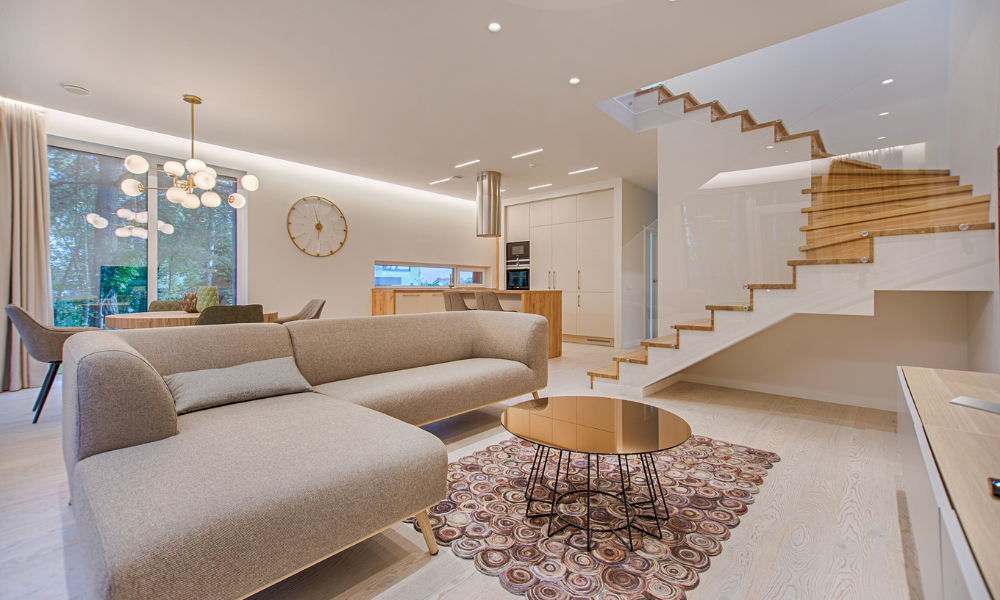Modern vs. Minimalist: What’s Right for Your Home?
When it comes to home interiors, two design philosophies often get confused — modern and minimalist. Though they share a clean, clutter-free aesthetic, their principles and execution differ greatly.
Whether you’re renovating, redecorating, or designing a home from scratch, understanding the distinctions between these styles will help you make a choice that reflects both your personality and lifestyle. In this blog, we’ll explore Modern Vs. Minimalist Interior Design, their core features, pros and cons, and how to choose the right one for your space.
What is Modern Interior Design?
Modern Interior Design emerged in the early to mid-twentieth century, greatly influenced by the Bauhaus movement and mid century modern architecture. It focuses on function, simplicity, and form — combining industrial elements with warm, natural tones.
Key Features of Modern Design:
- Clean lines and geometric shapes
- Use of natural materials (wood, leather, stone)
- Neutral color palettes with bold accents
- Open floor plans
- Functional furniture with sleek finishes
- Metal, glass, and exposed structural elements
Modern Design in Practice:
Picture a living room with a low-profile leather sofa, a glass-topped coffee table, and a giant abstract picture on a white wall. Add in natural wood floors, metal-framed windows, and strategic lighting, and you have a perfect modern space.
Pros of Modern Design:
- Timeless appeal
- Encourages natural light and openness
- Embraces both functionality and aesthetics
- Works well with new technologies and smart homes
Cons of Modern Design:
- Can feel cold or impersonal if not balanced
- Some pieces can be costly due to material quality
- Bold accents may go out of style quickly
What is Minimalist Interior Design?
Minimalist design is rooted in the philosophy of “less is more.” It draws inspiration from Japanese Zen culture, emphasizing serenity, functionality, and the elimination of unnecessary elements.
Key Features of Minimalist Design:
- Ultra-clean lines and simple forms
- Neutral monochrome color schemes (whites, greys, beige)
- Limited décor and accessories
- Built-in storage to hide clutter
- Emphasis on space and light
- High-function, low-distraction furniture
Minimalist Design in Practice:
Picture a bedroom with a platform bed, white linen sheets, a single framed artwork, and no visible clutter. Every item has a purpose, and nothing is included for excess decoration.
Pros of Minimalist Design:
- Reduces visual and mental clutter
- Cost-effective if planned well
- Easy to clean and maintain
- Promotes mindfulness and calm
Cons of Minimalist Design:
- Can feel sterile or incomplete if overdone
- Might lack personality or warmth
- Difficult to achieve without strict discipline
Modern vs. Minimalist: Head-to-Head Comparison
Feature | Modern Design | Minimalist Design |
Philosophy | Aesthetic meets function | Simplicity and purpose |
Color Palette | Neutral with bold accents | Mostly monochrome and neutral |
Materials | Wood, leather, glass, metal | Natural materials, fewer elements |
Decor | Artwork, lighting, statement pieces | Minimal to no decoration |
Furniture | Stylish, sleek, sometimes bold | Simple, functional, low-profile |
Feel | Warm and elegant | Clean and calming |
Which One Is Right for Your Home?
The decision between modern and minimalist design is influenced by your lifestyle, personality, and desired atmosphere in your home.
Choose Modern If:
- You enjoy blending form and function.
- You appreciate a little bit of boldness in your décor.
- You want a stylish yet cozy environment.
- You’re a fan of art, patterns, or statement furniture.
Choose Minimalist If:
- You’re seeking simplicity, calm, and clarity.
- You dislike clutter and value organization.
- You want a peaceful, stress-free environment.
- You prefer a neutral, harmonious aesthetic.
Can You Combine Both?
Absolutely! In fact, modern minimalist design is a trending hybrid style that takes the best of both worlds. It emphasizes function, clean lines, and openness like minimalism, but incorporates warmer tones and practical décor inspired by modernism.
For instance:
- Opt for modern furniture with minimalist layout.
- Use neutral color palettes with small bold accents.
- Choose functional lighting and hidden storage.
This fusion creates a clean yet inviting home that doesn’t feel stark.
Expert Tips for Making the Right Choice
- Assess Your Lifestyle:
Are you always on the go? Minimalism may suit you better. Love to host and entertain? Modern design might feel more welcoming. - Start Small:
Try applying the chosen style to one room first — like your living room or bedroom — before committing throughout the house. - Mix Mindfully:
If you’re drawn to both, blend modern’s visual interest with minimalist discipline. Avoid clutter while adding character. - Work with a Designer:
A professional interior designer can help translate your preferences into a cohesive, stylish home that reflects your goals.
Both modern and minimalist interior designs offer beautiful, functional solutions for today’s homes. The right choice depends on what resonates with your daily routine, emotional needs, and aesthetic preferences.
Whether you lean toward modern warmth or minimalist calm, your home should ultimately feel like a reflection of you. Take inspiration from both, experiment with the essentials, and create a space that brings comfort, clarity, and joy.


